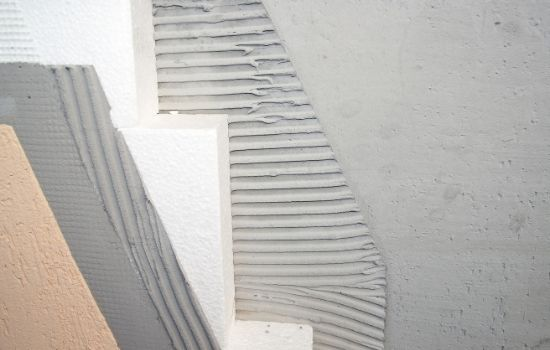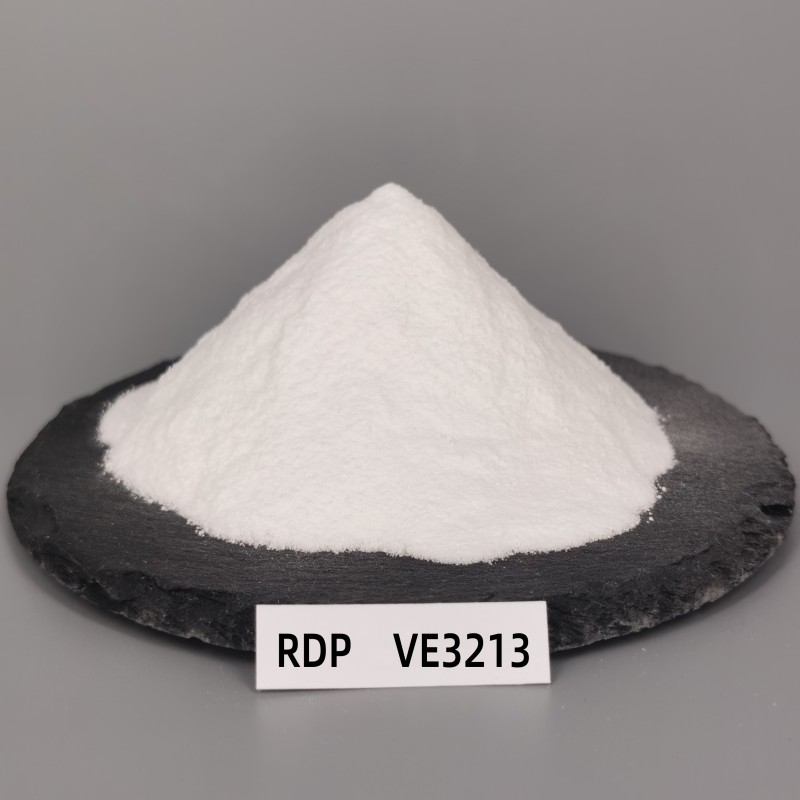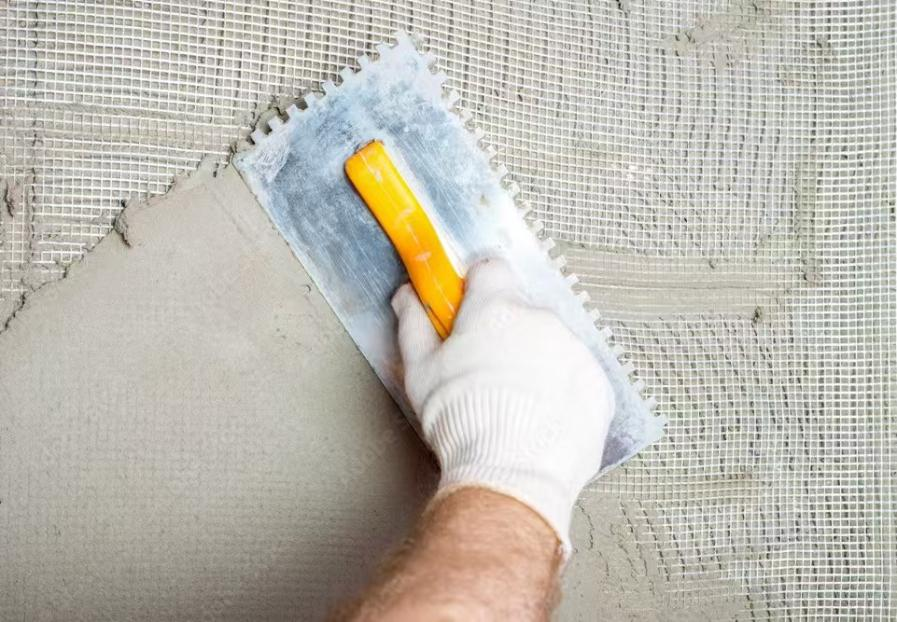EPS particle insulation mortar is a lightweight insulation material made by mixing inorganic binders, organic binders, admixtures, additives and light aggregates in a certain proportion. Among the EPS particle insulation mortars currently studied and applied, redispersible latex powder has a greater impact on the performance of the mortar, accounts for a high proportion of the cost, and has always been the focus of attention. The bonding performance of the EPS particle insulation mortar exterior wall insulation system mainly comes from the polymer binder, which is mostly composed of vinyl acetate/ethylene copolymers. Spray drying of this type of polymer emulsion can produce redispersible latex powder. Redispersible latex powder has become a development trend in construction due to its precise preparation, convenient transportation and easy storage. The performance of EPS particle insulation mortar depends largely on the type and amount of polymer used. Ethylene-vinyl acetate powder (EVA) with high ethylene content and low Tg (glass transition temperature) value has excellent performance in impact strength, bonding strength and water resistance.

Redispersible polymer powder is white, has good fluidity, has uniform particle size after redispersion, and has good dispersibility. After mixing with water, the latex powder particles can return to their original emulsion state and maintain the characteristics and functions as an organic binder. The role of redispersible polymer powder in thermal insulation mortar is controlled by two processes: cement hydration and polymer powder film formation. The composite system formation process of cement hydration and polymer powder film formation is completed by the following four steps:

(1)When the latex powder is mixed with cement mortar, the dispersed fine polymer particles are evenly dispersed in the slurry.
(2) Cement gel is gradually formed in the polymer/cement paste through the hydration of cement, the liquid phase is saturated with calcium hydroxide formed during the hydration process, and polymer particles are deposited on part of the surface of the cement gel/unhydrated cement particle mixture.
(3)As the cement gel structure develops, water is consumed and polymer particles are gradually confined in the capillaries. As the cement further hydrates, the water in the capillaries decreases and polymer particles gather on the surface of the cement gel/unhydrated cement particle mixture and light aggregates, forming a continuous and tightly packed layer. At this point, the large pores are filled with sticky or self-adhesive polymer particles.
(4)Under the action of cement hydration, base absorption and surface evaporation, the moisture content is further reduced, and the polymer particles tightly stacked on the cement hydrate aggregate into a continuous film, bonding the hydration products together to form a complete network structure, and the polymer phase is interspersed throughout the cement hydration slurry.
Cement hydration and latex powder film-forming composition form a new composite system, and their combined effect improves and enhances the performance of the thermal insulation mortar.

The effect of polymer powder addition on thermal insulation mortar strength
The highly flexible and highly elastic polymer mesh membrane formed by latex powder significantly improves the performance of thermal insulation mortar, especially the tensile strength is greatly improved. When an external force is applied, the occurrence of micro-cracks will be offset or slowed down due to the improvement of the overall cohesion of the mortar and the elasticity of the polymer.
The tensile strength of the thermal insulation mortar increases with the increase of polymer powder content; the flexural strength and compressive strength decrease to a certain extent with the increase of latex powder content, but can still meet the requirements of the wall exterior decoration. The compression flexure is relatively small, which reflects that the thermal insulation mortar has good flexibility and deformation performance.
The main reasons why polymer powder improves tensile strength are: during the coagulation and hardening process of mortar, the polymer will gel and form a film in the transition zone between EPS particles and cement paste, making the interface between the two denser and stronger; a part of the polymer is dispersed into the cement paste and condensed into a film on the surface of cement hydrate gel to form a polymer network. This low elastic modulus polymer network improves the toughness of hardened cement; certain polar groups in the polymer molecules may also react chemically with cement hydration products to form special bridging effects, thereby improving the physical structure of cement hydration products and alleviating internal stress, thereby reducing the generation of microcracks in the cement paste.
Effect of redispersible polymer powder dosage on the working performance of EPS thermal insulation mortar
With the increase of latex powder dosage, cohesion and water retention are significantly improved, and working performance is optimized. When the dosage reaches 2.5%, it can fully meet the construction needs. If the dosage is too much, the viscosity of EPS thermal insulation mortar is too high and the fluidity is low, which is not conducive to construction, and the mortar cost increases.
The reason why polymer powder optimizes the working performance of mortar is that polymer powder is a high molecular polymer with polar groups. When polymer powder is mixed with EPS particles, the non-polar segments in the main chain of polymer powder will interact with the EPS particles. Physical adsorption occurs on the non-polar surface of EPS. The polar groups in the polymer are oriented outward on the surface of the EPS particles, making the EPS particles change from hydrophobic to hydrophilic. Due to the modification effect of the latex powder on the surface of the EPS particles, the problem that the EPS particles are easily exposed to water is solved. The problem of floating and large mortar layering. When cement is added and mixed at this time, the polar groups adsorbed on the surface of the EPS particles interact with the cement and are closely combined, thereby significantly improving the workability of the EPS insulation mortar. This is reflected in the fact that EPS particles are easily wetted by cement slurry, and the bonding force between the two is greatly improved.
Redispersible polymer powder is an indispensable component of high-performance EPS particle insulation slurry. Its mechanism of action is mainly that the polymer particles in the system aggregate into a continuous film, bonding the cement hydration products together to form a complete network structure and firmly combining with the EPS particles. The composite system of redispersible polymer powder and other binders has a good soft elastic effect, which greatly improves the bonding tensile strength and construction performance of EPS particle insulation mortar.
Post time: Dec-30-2024





